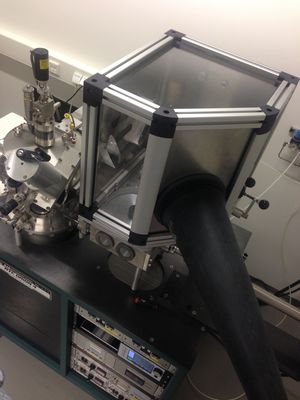Student projects
Here you can find general information on Bsc/MSc end projects related to
Metal Halide Perovskites for Solar Cells
Metal halide perovskites (MHPs) have recently attracted enormous attention since (CH3NH3)PbI3 is successfully applied as photoactive material in photovoltaic devices, yielding solar cells with an efficiency exceeding 22%. Interestingly, these materials can be prepared from cheap precursors and are processed via wet chemical techniques like spin-coating. Moreover, these semiconducting materials combine a number of favourable properties including high optical absorption, efficient charge carrier generation and relatively high charge carrier diffusion lengths. Despite the cheap versatile processing the resulting perovskites have low concentrations of trap states and doping densities. The relationship, however, between precursors, preparation method and on the other side the opto-electronic properties is far from clear. In our research we focus on how these properties depend on the structure, morphology and post production treatment of the perovskite films or crystals.
Activities within the framework of a typical masterproject
We have in house technique to deposit metal halide perovskite layers by spincoating, doctor-blading, or using physical vapour deposition. To reveal the structural properties XRD, AFM SEM and XPS can be performed. The optical properties of the photo-active layers will be studied by (time-resolved) optical absorption and/or luminescence spectroscopy. The Time-Resolved Microwave Conductivity (TRMC) technique can be used to determine the electronic properties like the charge carrier mobility and the excess carrier lifetimes. For additional characterisation Kelvin Probe or Hall measurements can be carried out. Finally, thin films of these materials can be contacted to prepare and study complete perovskite solar cells.
Contact: Tom Savenije
Telephone: 0152786537

Working with the evaporator


MAPI films deposited using physical vapor deposition